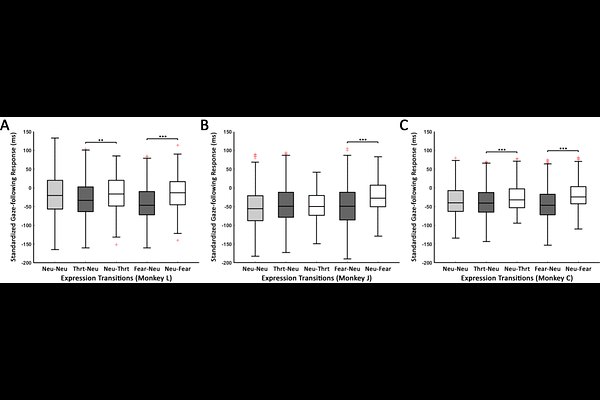Monkeys integrate facial expressions and direct gaze to modulate gaze-following behavior

Monkeys integrate facial expressions and direct gaze to modulate gaze-following behavior
Chong, I.; Thier, P.
AbstractFor humans, being looked at directly can boost our readiness to follow another's gaze, but can monkeys invite an observer to engage with them in the same way? We trained three rhesus macaques on a head gaze-following task in which the portrait of a demonstrator monkey would face the viewer before turning to look at a distinct spatial target. The demonstrator could look at the viewer with his eyes opened or closed and display different facial expressions. Unlike in humans, we found that direct gaze alone, devoid of an accompanying specific expression failed to influence the latency of the subsequent gaze-following response. However, when combined with threat, direct gaze significantly accelerated gaze-following. In a second experiment, we show that once turned away the expression associated with prior direct gaze no longer mattered; instead a submissive facial expression accompanying the gaze shift delayed gaze-following. Direct comparison of both experiments reveals that expressions accompanying direct gaze trigger earlier gaze-following responses than the same expressions joining gaze aversion. These results document the pronounced behavioral importance of the valuation of expressions signaling danger, arguably creating heightened alertness in monkey observers, thereby priming their gaze-following to allow for immediate conflict resolution.